Marathon Training Academy

Running as Self-Leadership
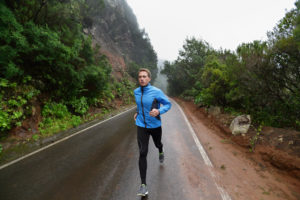 In this podcast episode we explain how long distance running is an exercise in self-leadership.
In this podcast episode we explain how long distance running is an exercise in self-leadership.
Hear how to take control of your thoughts, influence your emotions, and discipline your body to accomplish your running and fitness goals!
Running as Self-Leadership
One summer I chose to sign up for the Continental Divide 50k in Montana. Finding myself weary after 25 miles, I laid down under a fallen tree and thought, “What choices have I made in life to end up here?”.
Long-distance running is more than just healthy exercise. It is a journey of self-discovery and self-leadership.
What is Self Leadership?
Andrew Bryant defines self-leadership as,
“The practice of intentionally influencing your thinking, feeling, and actions toward your objectives”.(1)
The term self-leadership was coined by Charles C. Manz in 1983. He defined it as a
“comprehensive self-influence perspective that concerns leading oneself toward performance of naturally motivating tasks as well as managing oneself to do work that must be done but is not naturally motivating”(2).
I like how both definitions center on the word influence. We will cover this idea in 3 parts: influencing mind, influencing the heart, and inducing the body.
Leading The Mind
The Brain as the Central Governor
The most interesting lesson I’ve learned from interviewing scientists on the MTA podcast is the idea of the Central Governor Model of fatigue by Dr. Tim Noakes. He told us,
When I started in the sport sciences we were taught as dogma that if you’re tired it’s because your muscles produced too much lactic acid. The lactic acid then poisons the muscles so you can’t go any faster. Then some of my colleagues found that fatigue is purely a sensation; an emotion. It has nothing to do with what’s actually happening in your body, and it’s got lots to do with how close you are to the finish of the race. So the brain uses this emotion of fatigue to keep you within a safe pace as you run a long race. (3)
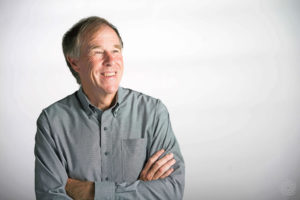
Professor Tim Noakes
photo credit: Noakes Foundation
Fatigue is mostly a sensation created by the brain to conserve energy. This has many interesting implications! Our brain literally creates the reality it wants us to feel, though this reality might not square with the actual facts.
When I felt fatigued while running the New Orleans Rock ’n’ Roll Marathon I repeated to myself, “It’s all in my head. It’s all in my head.” It helped!
If you can create a new reality, why not create one in which you are a healthy goal-oriented person who lives your life to the fullest? A goal is a dream acted upon.
Happy Chemicals
Thought patterns can release cortisol (the stress hormone) or happy chemicals like serotonin. The authors of the book Relentless Solution Focus argue that problem-centric thinking triggers a cortisol inducing fight or flight response.
Solution-focused thinking, on the other hand, releases serotonin, dopamine, and norepinephrine —neurotransmitters that light up the brain with happy feelings.(4)
Speaking of happy chemicals, in the book Endure by Alex Hutchinson he shares a study from the University of Wales in which cyclists who were shown happy faces rode for three minutes longer and reported a lower feeling of effort than cyclists who were shown sad faces.(5)

Visualization
Our brains cannot distinguish between what we see with our eyes and what we visualize with our minds.
A classic example is a study mentioned in the book Emotional Intelligence 2.0. Scientists took MRI scans of people watching the sunset and compared them to people just visualizing a sunset. The same regions of the brain were activated in both test groups.(6)
Visualization is a way to practice a routine, plan, or behavior solely with our minds. Natan Sharansky, imprisoned by the Soviets, kept his mind sharp by playing chess against himself in his imagination. After his release he beat chess phenom Garry Kasparov.
Former American Record holder Deena Kastor used visualization during her training. In her book Let Your Mind Run she talks about working with Dr. Jonathan Brower who led the team through a visualization exercise. They visualized running in the mountains and afterward Deena was sweating. Dr. Brower told them,
“The mind doesn’t distinguish between fact and fiction. What the mind sees and thinks, the body feels, and what the body feels, the mind, or at least the subconscious, learns.”(7)
Leading The Heart
Emotion Spotting
The authors of Emotional Intelligence 2.0 write that only 36 percent of the people they tested were able to accurately identify emotions as they happen.
Identifying emotions, also called emotion spotting, helps the rational brain take power back from the emotional brain in real-time. To facilitate this it is helpful to use an emotions chart like this one:
For more on how to do this be sure to listen to our podcast episode Running with Emotional Intelligence.
It is normal to feel discouraged when a training run doesn’t go well. The key is to realize that emotional highs and lows are part of the journey of life. Emotions are not necessarily good or bad, they are just information.
Accepting one’s emotions without labeling them as bad will prevent a negative spiral of self-judgement. The goal is to avoid self-judgement and move into more self-compassion.
The Importance of Knowing Why
Andrew Stanton, a screenwriter at Pixar says “All well-drawn characters have a spine. And the idea is that the character has an inner motor, a dominant, unconscious goal that they’re striving for, an itch they can’t scratch”.
For me and many runners I’ve spoken to the unconscious goal is to live life more fully. Through running we find the freedom to explore, push the limits, and connect with nature.
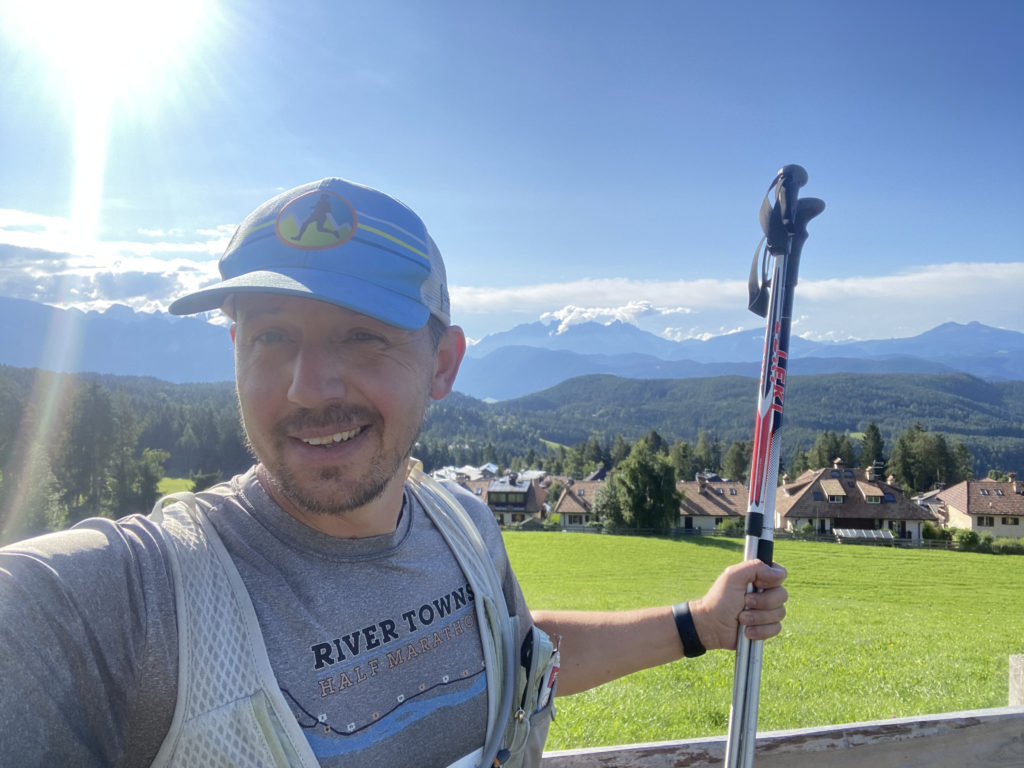
Running in the Italian Alps in 2021
Running has given me the opportunity to travel the world and meet interesting people. It also gives me the freedom of mobility and good health. Stopping to remember the big “why” of my unconscious goal helps me not to get disappointed about a bad day. The big picture is what matters. It also takes my ego out of the equation since I’m not running marathons to impress others.
Leading The Body
Lean into Discomfort
Long distance runners purposely choose to do hard things. Joe De Sena, founder of the Spartan Race series, has a concept called “obstacle immunity” —the ability to move past, around, through, or over what life places in your path.(8)
Through purposely making the body do hard things, like running marathons, we build up the ability to push through life’s obstacles. If you can run 26.2 miles it’s not such a big deal to take the stairs when the elevator is out of order.
Teach yourself that there is “magic in the misery”. Choosing to toughen the body through doing hard things forces one into a self-leadership growth process.
The real marathon starts when it begins to hurt. When you start feeling the lactic acid in your legs and the weariness, tell yourself “this is why you came here”. What does the discomfort have to teach me today?
Matter Over Mind
Body language researcher Amy Cuddy argues that assuming a power pose like the popular pictures of Wonder Woman can make us feel more confident.(9)
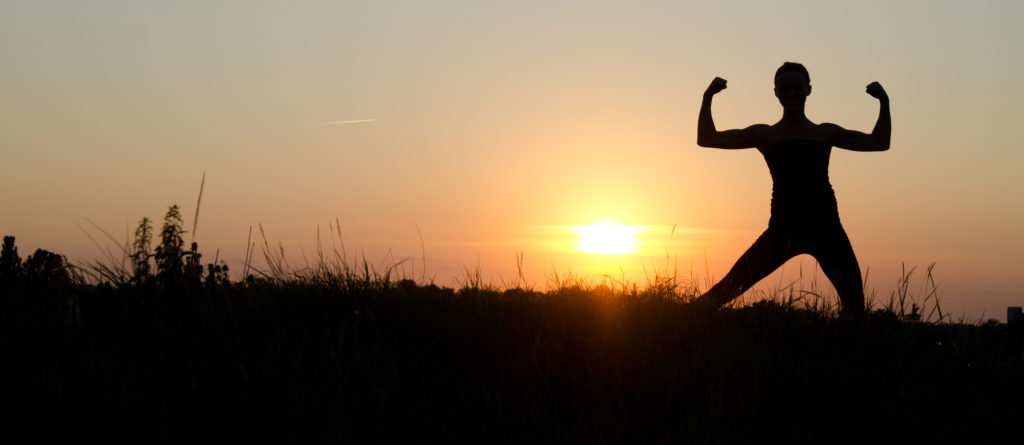
This jives with research from the world of endurance sports. According to a Runner’s World article, a study published in Psychology of Sport and Exercise found that runners who smiled used less oxygen, ran more economically, and had a lower perceived rate of exertion than those who frowned and those in the control group.(10)
Our physical states effect the story taking place inside our minds. Self-leadership of the body is the art of bringing it into alignment with my goals, values, and vision. If you want to improve you mood, go for a run! (Or even a walk).
The Importance of a Physical Practice
Finally, let’s talk about viewing running as a physical practice (to borrow a phrase from Brad Stulberg).
Movement is a way to be more grounded. In his book The Practice of Groundedness, Brad Stulberg says, “Movement promotes generalized well-being, strength, and stability—not just in body but also in mind.”
It requires getting comfortable with being uncomfortable. Stulberg’s golden rule is this: “Move your body often, sometimes hard; every bit counts.”
- To do this he recommends treating running as a practice- something integral to your day and week. Some of his practical suggestions include: taking regular movement breaks during your day, scheduling workouts on your calendar, remembering that the best time to run is the time you’ll stick to, remembering that an imperfect something is better than the perfect nothing, and including community in your running.
For the Type A Person
If you are a type A person (like Angie, my better half) you might drive yourself too hard and burn out. This can be tough because the mentality is: if some running (or whatever the workout) is good, then more is always better.
You might think that more progress will be obtained through running more miles per week or more days per week. But the truth is that you only benefit from your runs (and other workouts) to the extent you can recover from them.
And this is different for each person based on genetics, experience, age, overall health, other stressors, and much more. If you have trouble taking one rest day a week you’re not doing yourself any favors and could actually be hindering your own progress.
Conclusion
Running a marathon is like a forced self-improvement program. Self-leadership is having a vision of the person you want to be in the future (your future self) and putting yourself in process. Commit to the process!
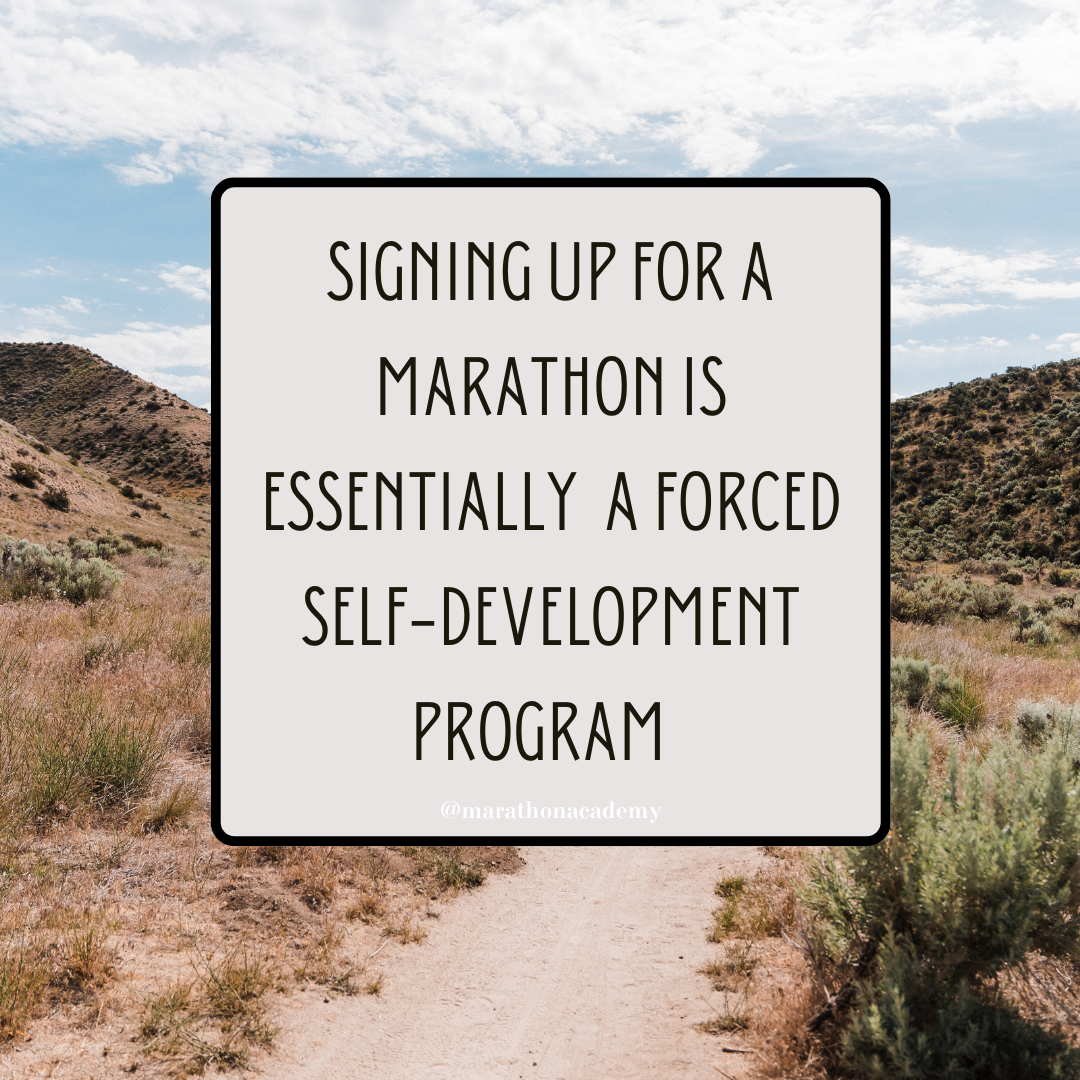
Sources
- Bryant, A. (2012). What is Self-Leadership. Andrew Bryant Self-Leadership. www.selfleadership.com/what-is-self-leadership
- Neuhaus, M. (2021 December 14). What is Self-Leadership? Models, Theory, and Examples. Positive Psychology. positivepsychology.com/self-leadership/
- Your Brain as the Central Governor – Interview with Dr. Tim Noakes. Marathon Training Academy. https://www.marathontrainingacademy.com/noakes
- Reed, E. & Selk, J. (2021). Relentless Solution Focus. New York. McGraw Hill
- Hutchinson, Alex. (2018). Endure. New York. HarperCollins. Pg. 65-66
- Bradberry, T. & Greaves J. (2009). Emotional Intelligence 2.0. San Diego.
TalentSmart. Pg. 120
- Kastor, D. (2018). New York. Crown. Let Your Mind Run. Pg. 112
- De Sena, J. (2016). Spartan Fit! New York. Houghton Mifflin Harcourt. Pg. 4
- Cuddy, A. (2012, June) Your Body Language May Shape Who You Are [Video]. TED Conferences. https://www.ted.com/talks/amy_cuddy_your_body_language_may_shape_who_you_are?language=en
- Runner’s World. (2018, February 11). This is why Kipchoge smiles when he runs (and why you should be doing it too). https://www.runnersworld.com/uk/training/motivation/a776539/how-smiling-improves-your-running/
Also Mentioned in This Episode
Free Coaching Consultation. Talk to our head coach about your marathon goals and see what working one-on-one with a certified running coach is like.
InsideTracker -Get 20% off the entire store with our link! Created by leading scientists, InsideTracker analyzes your blood, DNA, and fitness tracking data to identify where you’re optimized—and where you’re not.
Tanri Outdoors -Sun protections for runners by runners. They make clean suncare products like SPF lip balms, mineral sunscreen, and after sun restorative moisturizer.
Athletic Greens -FREE 1 year supply of Vitamin D AND 5 free travel packs with your first purchase. ONE tasty scoop of AG1 contains 75 vitamins, minerals and whole food-sourced ingredients, including a multivitamin, multimineral, probiotic, greens superfood blend and more in one convenient daily serving.
The Richmond Marathon -meet us at the 45th anniversary of this stellar marathon. Be sure to beat the July 1 price increase!





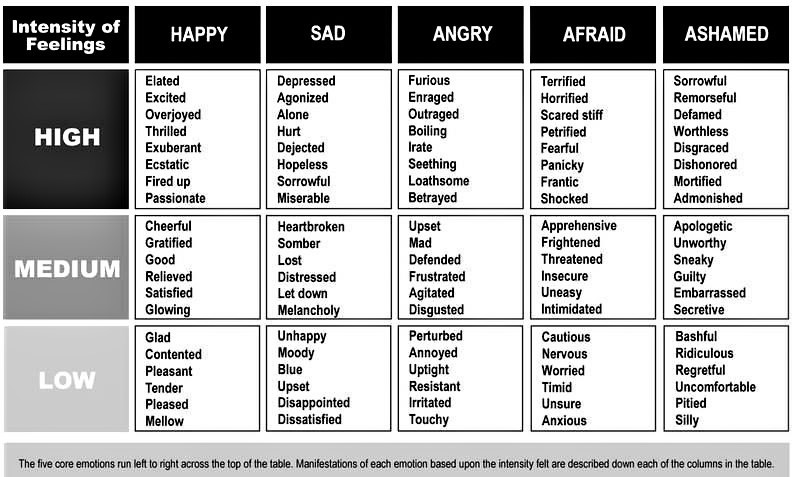

 Visit Podcast Website
Visit Podcast Website RSS Podcast Feed
RSS Podcast Feed Subscribe
Subscribe
 Add to MyCast
Add to MyCast